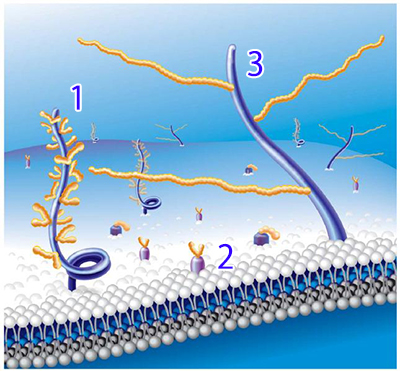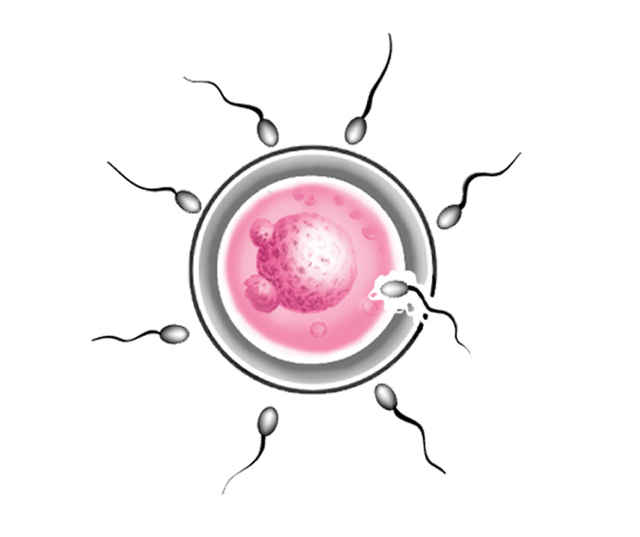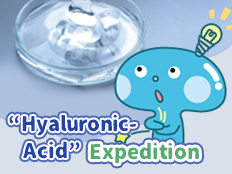Glycoscience, the specialty of Seikagaku, is a field of research into glucides. Sugars that constitute glucides are similar to a chain in which monosaccharides, such as galactose, mannose, and amino sugars, are linked, which is called a “sugar chain”. Sugar chains are bound to proteins and lipids to form glycoconjugates. Many sugar chains protrude from the surface of the cells that make up our body. What do the sugar chains do on the surface of the cells?
Various types of glycoconjugates
- Sugar chain + protein = glycoprotein
- Sugar chain + lipid = glycolipid
- Very long sugar chain (glycosaminoglycan) + protein = proteoglycan

Sugar chains are known as the “face of the cell”, because different types of cells have different patterns of sugar chains. In other words, sugar chains generate the identity and diversity of cells. They are believed to play the role of an antenna to mediate cell-to-cell communication. For example, just as we can distinguish a person by looking at their face, cells in the body recognize each other by the sugar chains on the surface and exchange necessary information via sugar chains.
Recently, the importance of sugar chains is becoming understood in a variety of life phenomena, from birth to aging. Glycoscience is attracting attention in the field of life science.
- Creation of life through fertilization
Sugar chains are involved in fertilization process that occurs when a sperm encounters an egg.
- Determination of blood type
The ABO blood type of a person is determined by the shape of the sugar chains on the surface of red blood cells.
- Water retention
Sugar chains such as hyaluronic acid protect cells against excessive water loss..
- Cell growth control
Sugar chains control the activity of certain growth factors.
- Protecting the body against external enemies
When a viral or other infection invasion occurs, sugar chains activate immune cells by stimulating macrophages, which are a type of white blood cell.
The relationship between sugar chains and diseases is gaining attention. Sugar chains are thought to be involved in the mechanism of many diseases, including viral and bacterial infections, immunological diseases, the onset and metastasis of cancer and lifestyle-related diseases.
The progress of studies on the sugar chains’ shape and function when affected by a disease is expected to lead to the development of new therapies and diagnostic methods.
- Viral and bacterial infections
Pathogens such as the influenza virus bind to specific sugar chains on a cell’s surface before penetrating the cell itself.
- Metastasis of cancer
When cells become cancerous, their sugar chains change shape and start to accelerate the proliferation and metastasis of cancer cells.
- Diabetes
Abnormal sugar chain genes are believed to be one of the causes of this disease.
*When cells become cancerous, sugar chains change their faces (conceptual illustration).
Reference:
It has been discovered that in highly metastatic cancer cells, the amount of giant sugar chains increase, which are only sparsely expressed in normal.
















